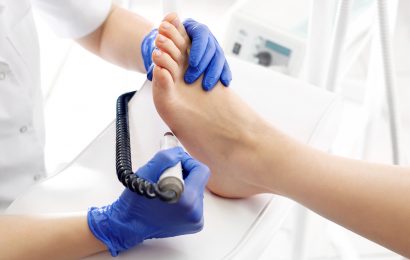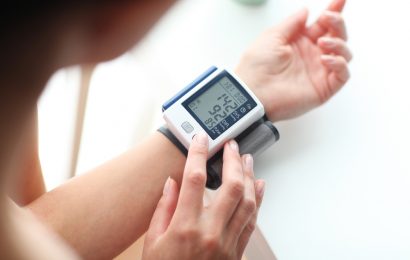It is a well-known fact that chronic illness can cause problems with sexual function. Today, erectile dysfunction, also called impotence, affects an estimated 30 million men in the United States. It is a problem that often leads to frustration, embarrassment, loss of self-esteem, isolation, and depression. It can also lead to strain in a relationship, particularly if a man withdraws from his partner rather than communicating openly about what he is experiencing. Men with diabetes have a higher incidence of erectile dysfunction, yet it is often ignored and left untreated.
Men willing to seek help, though, find that erectile dysfunction is treatable. Today, there are many options that work well and have restored erectile function to many men.
Erectile dysfunction
Erectile dysfunction has a variety of definitions and forms, but the one discussed in this article is “the persistent inability to get or maintain an erection sufficient for sexual intercourse.” It is usually caused by disease, injury, or a drug and is not a normal part of the aging process.
An erection normally occurs when sexual stimulation causes nerves in the penis to release certain chemicals that start a cascade of reactions, resulting in the widening of blood vessels entering the penis and a narrowing of vessels leaving the penis. The increased blood flow allowed by the widened arteries fills the spongy tissues of the penis, causing the penis to thicken and lengthen. The engorged tissues compress the veins that take blood out of the penis, further narrowing them, which limits blood outflow and maintains the erection. (Click here for more information about how an erection occurs.)
There are many complications associated with diabetes; however, the two complications that have a direct effect on erections are blood flow problems and nerve problems (neuropathy). High blood glucose levels can contribute to blockages or narrowing of blood vessels. Better known for causing problems such as atherosclerosis and peripheral artery disease (narrowing of the blood vessels supplying the legs and arms), this process can also affect blood vessels that supply blood to the penis.
Diabetic neuropathy also contributes to erectile dysfunction. Nerves are involved in signaling the blood vessels of the penis to widen or narrow (dilate or constrict). Over time, high blood glucose levels damage nerves, and as a result, they cannot properly signal the vessels to open and close, making an erection difficult to achieve.
Most often, erectile problems in men with diabetes are a result of problems with both blood flow and nerve function. However, getting regular exercise, controlling one’s blood pressure, and controlling one’s blood glucose, in addition to being good for controlling one’s diabetes, can prevent or delay neuropathy and vascular problems and help improve sexual function. For men already experiencing erectile difficulties, though, there are several treatment options.
The three main categories of treatment are drugs, mechanical devices, and surgery. Drugs can be taken orally, as a suppository, or as an injection. Mechanical devices cause more blood to enter the penis (vacuum devices), prevent blood from leaving the penis (constriction bands), or support the penis to make it more rigid (splints). Surgical treatment involves implanting a device into the penis. Some men have to try several of these options before finding the one that works best for them and their partners. (See “For More Information” to learn more about treatments for erectile dysfunction.)
Throughout this process, communication is key. The man and his partner need to talk about the pros and cons of each option to find a mutually satisfying solution. Health-care providers can give information, advice, and options, but ultimately it is the couple who must use and be satisfied with the treatment they choose.
Medicines
Although they are taken differently, the drugs described here are all basically vasodilators that increase the amount of blood that can enter the penis. They mainly differ in side effects, time to onset of action, and convenience.
Pills. Sildenafil (Viagra) took the market by storm several years ago, bringing sexual dysfunction out of the closet and getting men into doctors’ offices to deal with it. The overwhelming response to sildenafil and the increased awareness of erectile dysfunction as a real problem for millions of men enticed two new contenders into the market: vardenafil (Levitra) and tadalafil (Cialis). The introduction of these new drugs increases the choices for treating this problem.
The main difference between the three drugs is that tadalafil can last up to 36 hours compared with 4 hours for sildenafil and vardenafil. However, it has not been studied whether a man can achieve multiple erections per dose of tadalafil, and tadalafil may have a greater potential for drug interactions because of its longer period of effectiveness.
The actions of all three drugs are similar in that they increase blood flow to the penis. They work by stopping the degradation of the vessel-widening chemicals that are produced in response to sexual stimulation; with their degradation stopped, the chemicals are free to continue allowing more blood into the penis. Because these drugs don’t produce vessel-widening chemicals themselves, the user must have some sexual stimulation to start the release of such chemicals and achieve an erection. The three drugs all start to work in as little as 30 minutes. (See this table.)
Each medicine can be taken daily and each has the following possible side effects: headaches, flushing, upset stomach, visual disturbances, and prolonged erections. (Prolonged erections lasting more than four hours require immediate medical attention to prevent permanent damage to the penis.) Tadalafil may also cause muscle aches or back pain while its competitors don’t, but it is also less likely than its competitors to cause so-called “blue vision,” a condition in which users temporarily experience a blue tinge to their vision while using the drug. Sildenafil has been around longer than its competitors and therefore has a more proven safety profile. Sildenafil should be taken on an empty stomach or with a light (low-fat) meal; the others can be taken with food or on an empty stomach. Alcohol may be used in moderation with any of these medicines.
All three drugs have similar precautions. You should not use these drugs if you are taking a drug that contains nitrate or an alpha-blocker (with one exception for tadalafil), which is used to treat high blood pressure or an enlarged prostate gland. Tadalafil may be taken with 0.4 milligrams of once-daily tamsulosin (Flomax).
Again, it’s important to note that erections won’t happen automatically with these drugs. Sexual stimulation is a must for these medicines to be effective, so if the mood isn’t right, a man may not get an erection, even if he has successfully used the pill before.
Urethral suppository. A urethral suppository containing the drug alprostadil (MUSE) hit the market a year before sildenafil. Like the oral medicines, the alprostadil suppository is a vasodilator that allows blood to enter the penis. About the size of a grain of rice, the suppository is placed into the urethral opening at the tip of the penis. (The urethra is the tube in the penis that allows urine to flow out of the body.) It dissolves inside the urethra where it is then absorbed into the blood. Proper insertion of the suppository is important; education and practice are critical to obtain the desired results. An erection that lasts for about one hour will usually occur in about 5—15 minutes. A man first takes the drug in his doctor’s office for instruction, safety, and determining the proper dose for him.
Potential side effects of the alprostadil suppository include mild dizziness, a burning sensation in the urethra, prolonged erection, and aching and pain in the penis and testicles. Minor urethral bleeding or spotting due to improper administration can occur. Sexual stimulation will enhance the effect of the drug.
Penile injections. Alprostadil can also be injected into the penis to treat erectile dysfunction. Penile injection therapy was introduced in 1995. Although it is a highly effective therapy, fear or reluctance to give an injection into the penis and the convenience of taking a pill have allowed the oral drugs to dominate the market. Men using penile injections have reported that this therapy gives good results and very natural looking erections (alprostadil, whether injected or used as a urethral suppository, often enables a man to achieve a firm head to his penis, while other therapies can result in a soft head). Unlike the other medicines listed before, penile injections require very little sexual stimulation to result in an erection.
The drug is injected with a syringe and needle (similar to insulin injections), causing blood vessels to dilate, which brings more blood into the penis. An erection occurs in about 5—20 minutes and can last up to an hour. This treatment requires practice to correctly administer the medicine. As with the alprostadil suppository, a man’s first dose is taken in the doctor’s office to ensure safety, learn proper technique, and find the proper dose. Penile injection therapy can be used three times per week, with at least 24 hours between each dose.
Potential side effects include pain, infection, and scarring. Too large of a dose can cause prolonged, painful erections, but education and careful dosing can prevent this problem.
Mechanical devices
Before there were drugs, mechanical devices were the main treatment for erectile dysfunction. Although drug companies have the financial muscle to advertise the latest medicines, these little-heralded devices are still useful and effective.
Constriction bands. Some men, especially men with diabetes, are able to get an erection but are unable to maintain it because of venous leakage. The blood flows out as fast as it comes in. With position changes or with penetration, men with leakage can lose their erections. This is where a constriction band can help. There are a number of bands on the market made in a variety of materials, sizes, and shapes. A man uses a band by placing it at the base of the penis after an erection is attained to prevent blood from leaving the penis. Some men use constriction bands in conjunction with alprostadil or the oral erectile dysfunction treatments.
To prevent tissues from becoming oxygen-starved, the constriction band should be left on for no more than 30 minutes, and there should be about an hour’s time between applications. In some cases, the band may also compress the urethra, blocking the emission of ejaculatory fluids (although a constriction band is not – and should not be used as – a contraceptive device). A man who has a reduced ability to sense pain in his penis should not use a constriction band because pain is a warning that the device needs to be removed.
Vacuum devices. An external vacuum device was once the only treatment available for men with erectile dysfunction. Today, it is a tried and true treatment used by many men. It is relatively inexpensive and does not require injections or medicines to be successful. These devices can be bought over the counter or with a prescription, and they are often covered by insurance plans, including Medicare.
The device consists of a plastic cylinder, a pump (either handheld or battery-operated), a set of constriction bands, and a water-soluble lubricant. The lubricant is applied to the base of the penis to help form an airtight seal. Then the cylinder is placed over the flaccid penis and held tight against the pelvis. The pump is activated to create a vacuum within the cylinder, drawing blood into the penis. Once the penis is engorged with blood, a constriction band is rolled off the cylinder to near the base of the penis. The cylinder is removed, and the penis is left erect. The constriction band must be removed within 30 minutes.
Some possible side effects include a bluish color to the penis (from bruising or the tourniquet-like effect of the band), discomfort or pain (from pumping with too much pressure or from a constriction band that is too tight), coolness of the penis, and wobbliness of the penis near the base (the portion of the penis beyond the constriction band is still soft, so to minimize this problem, the band should be applied as far toward the base of the penis as possible). These problems can be lessened with practice and education.
Vacuum therapy is very effective, but it takes time and patience to use with ease. Statistics show that with practice, all men can find a level of success. Your physician or health professional can help with understanding and effectively applying the technique.
Penile splint. The penile splint (Rejoyn Support Sleeve System) is a relatively new and inexpensive treatment for men with erection problems. It allows men to have intercourse with a flaccid or semi-erect penis. The penis is placed in a tubular “splint” and a condom is applied over the penis. Penile splints allow for insertion and can produce a satisfying experience for both partners. These products can be purchased over the counter and can be used as frequently as you choose.
Surgery
Penile implants are considered a last resort, both because surgery is necessary to place them and because the surgery permanently changes some internal structures of the penis. As a result, if removal of the device becomes necessary for some reason, other erectile dysfunction treatments will not work. Those who choose penile implants, however, find they can create a natural-looking erection. There are several different models on the market, but the most common and most effective is the three-piece inflatable implant. (Other varieties include a two-piece inflatable implant and a noninflatable implant.) It consists of two cylinders placed in the penis, a pump placed in the scrotum next to the testicles, and a fluid reservoir placed in the abdomen. Squeezing the pump transfers the fluid from the reservoir to the cylinders, creating an erection. Because this is a surgical procedure, it usually involves an overnight hospital stay. Recovery is complete in about six weeks and involves some pain, bruising, and tenderness. As with any surgery, infection is a possibility, but measures are taken before, during, and after surgery to minimize the risk.
There is a reported high satisfaction rate among men and their partners with implants. Because the penis does not become engorged with blood, it can stay erect all day with no harm, and lovemaking can be prolonged as long as desired. It is important to be aware that any mechanical device can fail due to wear. The statistics show about a 10%—12% failure rate over about 10 years. If a mechanical failure occurs, the implant can usually be replaced. Be sure to discuss all of these issues with your doctor before having surgery.
Getting help
Today, men who have erectile problems do not need to accept them as permanent. There are options that address a variety of needs and circumstances. If you’re one of those men, speak to your doctor about what might work well for you, and bring your partner in on the discussion. Couples who work together tend to have the best success with treatment. Depending on the cause of your erectile dysfunction, your doctor may be able to treat you himself or may refer you to a urologist or other specialist. But you can only get the help you need by asking for it, so the sooner you take that first step, the sooner you’ll be saying yes to sexual intercourse.





